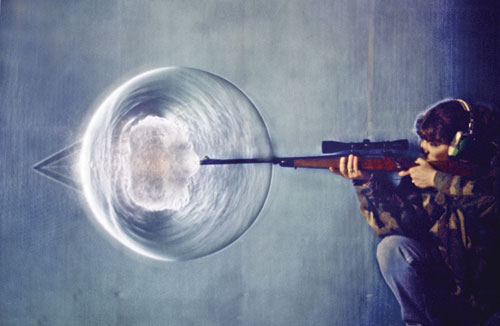
Complications due to retention of the bullet in the lung can cause severe damage. In such cases, the chances of hemorrhage as well as infection are high. This is a common injury in gunshot wound to the chest, when a bullet gets lodged into the pleural cavity or even the lung tissue. The bullet can hit the vital organs like lungs or pleura. These wounds are open and suck in more air, increasing the chances of lung collapse on the side injured.Ī bullet can hit the rib and can cause cracking or fracture of the ribs multiple rib fractures can occur. Common injuries like open chest wounds (sucking chest wounds) can result due to large wound in the chest wall. If you experience ringing in your ears or hear muffled speech, stop listening and have your hearing checked.The exact nature of injury varies with the area affected. The louder the volume, the less time required before your hearing may be affected. Hearing experts warn that noise-induced hearing loss can also occur as a result of repeated exposure to loud sound over time. Remember: you can adapt to higher volume settings over time, not realizing that the higher volume may be harmful to your hearing. You should also pay attention to how long you listen to audio at high volume. Some hearing experts recommend that you set the volume while in a quiet environment, turn the volume down if you can’t hear people speaking near you, avoid turning up the volume to block out noisy surroundings, and limit the amount of time that you use earbuds or headphones at high volume.

You may experience a different sound level with different earbuds or headphones and with different EQ settings. There’s no single volume setting appropriate for everyone. While not as much research exists regarding the effect of recreational exposure to loud sound, if you listen to music and audio with headphones or earbuds - whether they’re connected to your iPod, your computer, or some other audio source - you should follow a few common-sense recommendations. Most research about noise-induced hearing loss has focused on prolonged exposure to loud sounds in industrial workplaces. While you can experience noise-induced hearing loss as a result of a one-time exposure to an extremely loud sound - like a gunshot - noise-induced hearing loss can also occur as a result of repeated exposure to loud sounds over time. Symptoms can include distorted or muffled sound or difficulty understanding speech. As a result, you could experience noise-induced hearing loss. And if harmed, those hair cells can lose the ability to transmit sound to your brain. If you expose your ears to excessive sound pressure, you can harm those small hair cells in your ears.

Your brain then interprets these nerve impulses as sound. In your inner ear, these amplified vibrations move tiny hair cells that then convert the vibrations into nerve impulses sent to your brain. When the vibrations of a sound wave enter your ear, your eardrum and a set of tiny bones in your ear (the well-known hammer, anvil, and stirrup) amplify those vibrations. You can hear because your ears convert the vibrations of a sound wave in the air into signals that your brain interprets as sound. Each increase of 10 dB represents an approximate doubling of the perceived loudness of the sound. On the decibel scale, the softest sound that can be heard is 0 dB. Decibels are useful in measuring sound because they can represent the enormous range of sound levels the human ear can hear using a more manageable scale. When referring to sound, a decibel is used to measure the amplitude of the sound wave. The sound level heard by your ears is commonly measured in decibels. Music consists of a mixture of different frequencies and amplitudes. As the amplitude of a sound wave increases, the volume of the sound increases.

Amplitude is a description of the sound wave's strength. The human ear can detect a wide range of frequencies - from approximately 20 Hz to 20,000 Hz. Frequency is commonly measured in Hertz (Hz) with one Hz being equal to one wave completing a cycle per second. The frequency of the waves in the sound determines the sound wave’s pitch. Click here to get answers to frequently asked questions about the Volume Limit. You can easily set a Volume Limit on your iPod and iPhone.


 0 kommentar(er)
0 kommentar(er)
